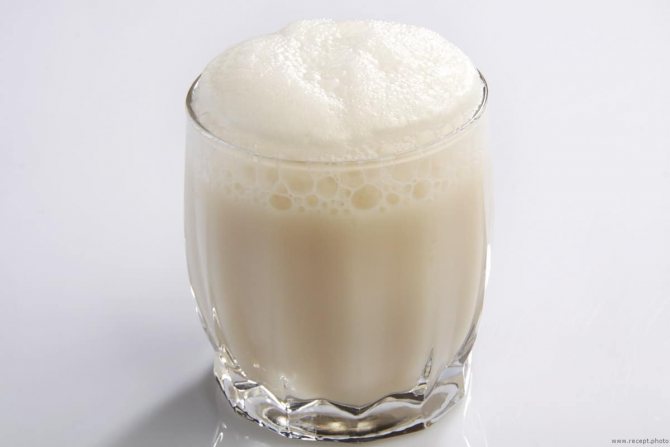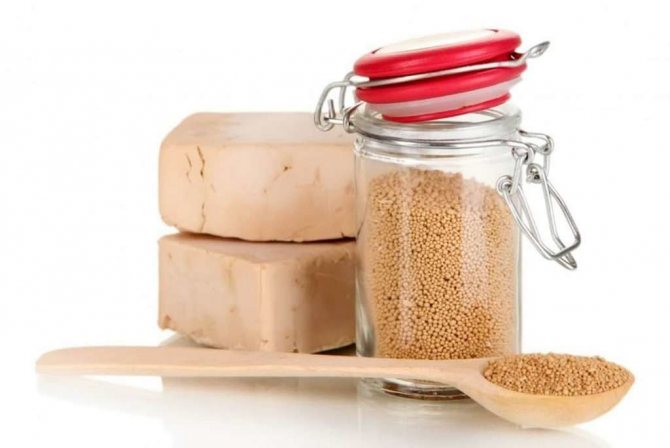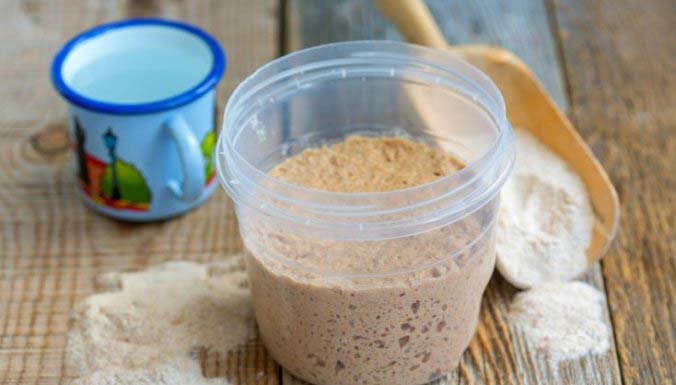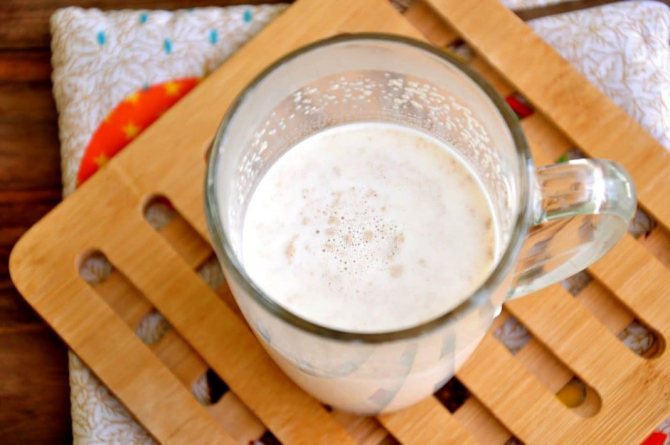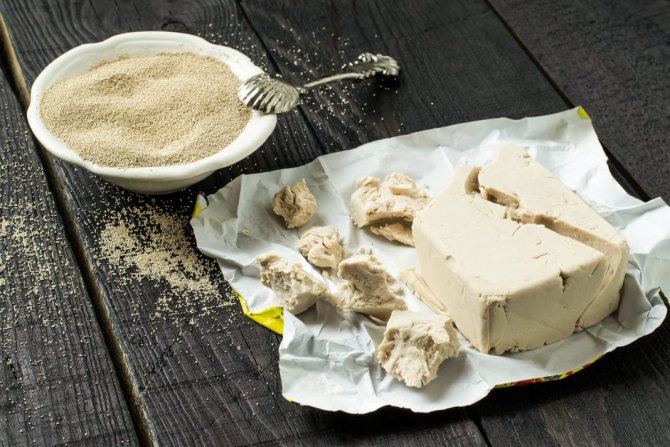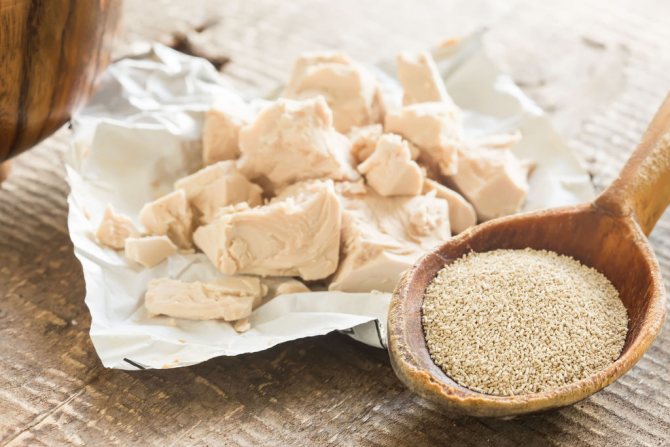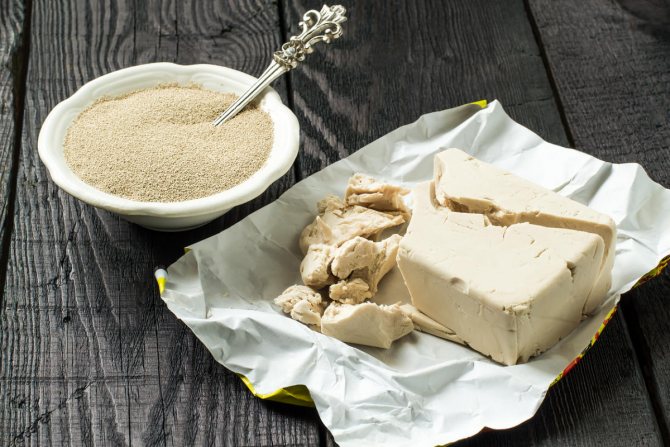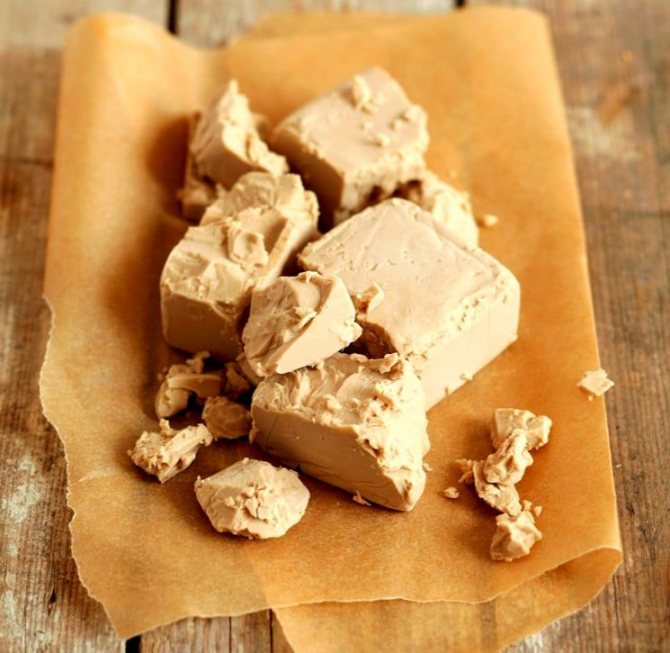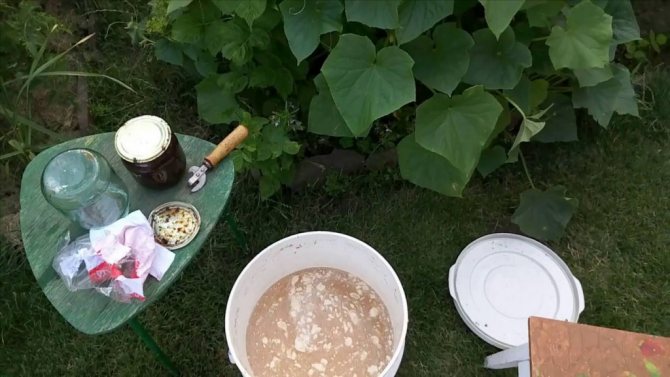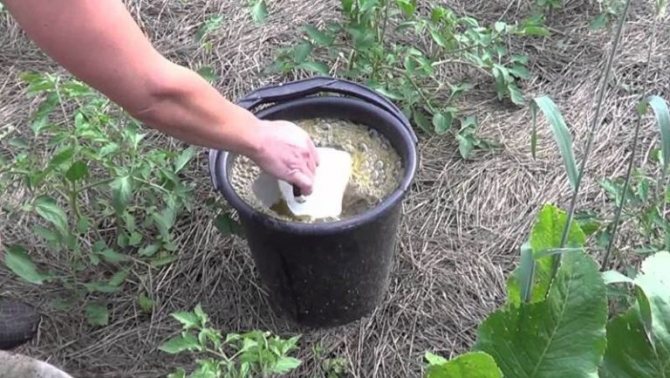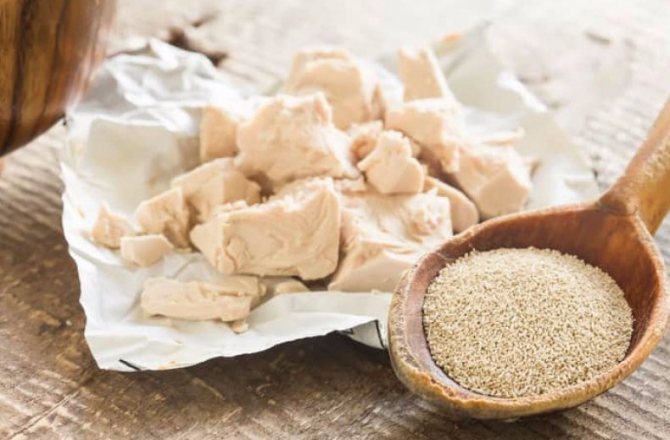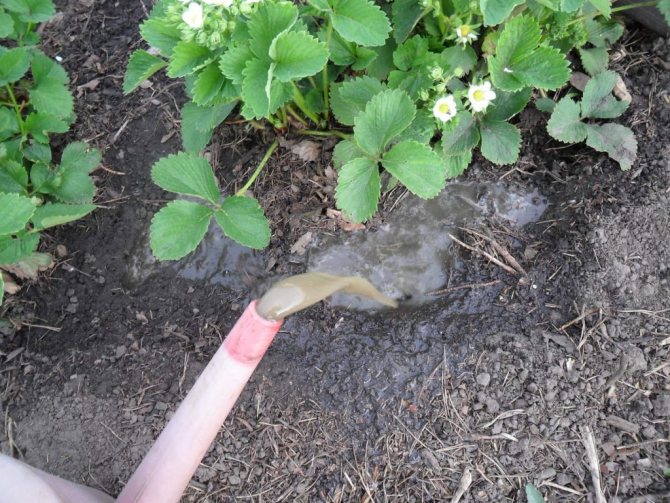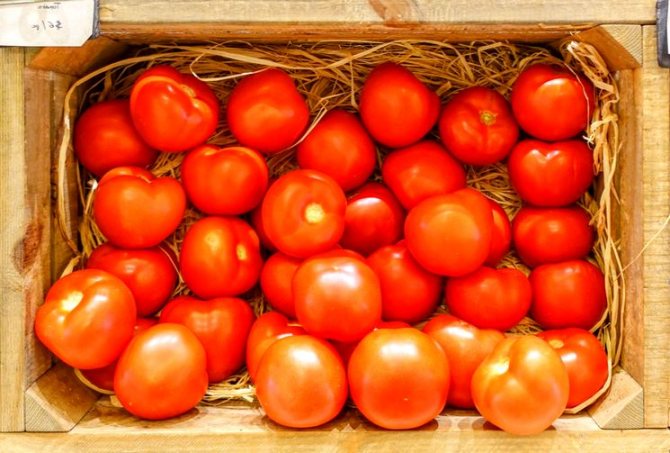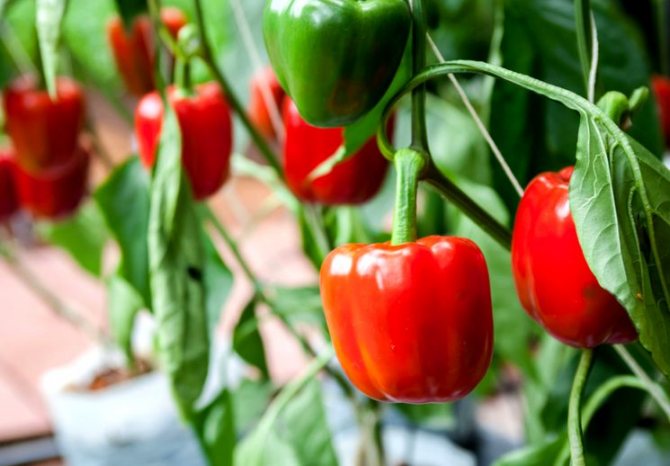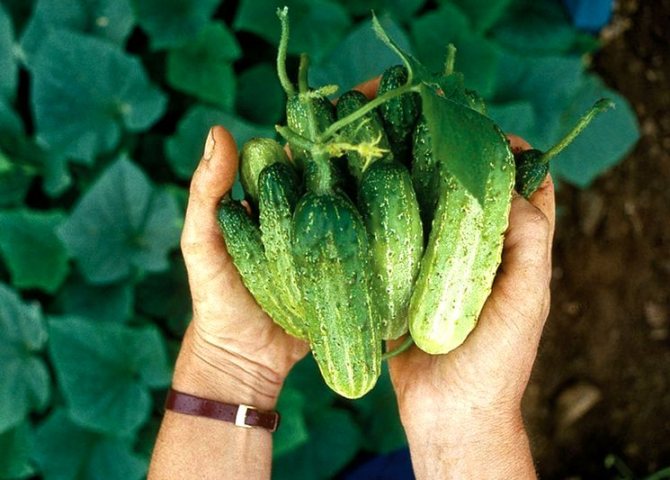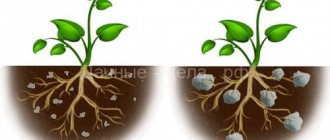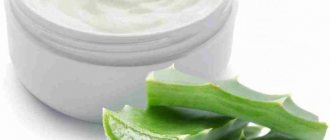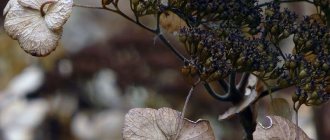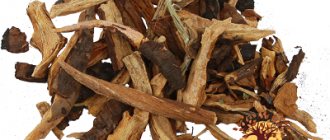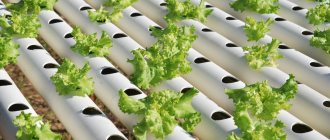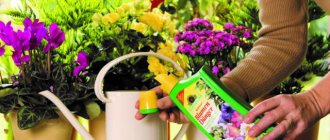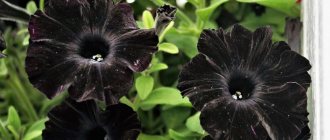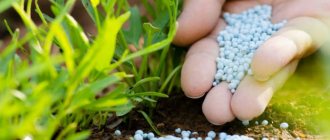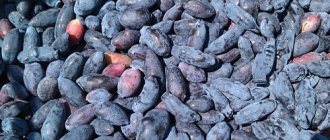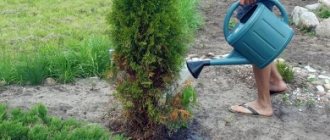Yeast plant food Is a fertilizer of organic origin, which is completely environmentally friendly and has a huge supply of useful components. This becomes an important reason for its so frequent use by experienced gardeners. Let us consider in more detail information about this type of plant fertilization.
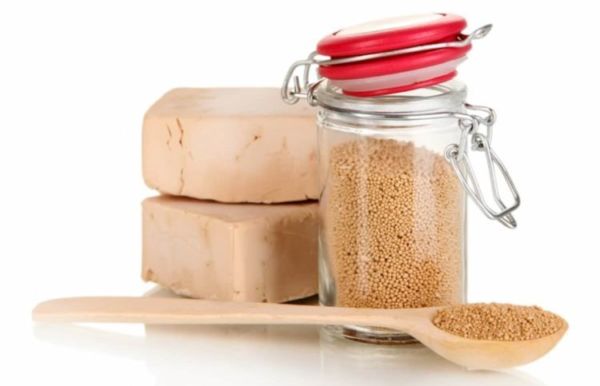
Why is yeast good for plants?
Yeast is incredibly helpful for many plants. The reasons for their use may be different, because for some, the quantity of the crop plays the main role, while others simply take care of its purity in an ecological sense.
Let's take a closer look at the benefits of such plant nutrition:
- Help in the formation and development of the root system.
- Accelerated growth of the entire culture.
- Creation of a favorable microflora, which has an overwhelming effect on pathogenic organisms.
- Reorganization of the soil composition and accelerated processing of organic components, and as a result, a greater amount of nitrogen (N) and potassium (K) appears here.
- The culture is able to develop even under unfavorable factors, such as insufficient lighting.
- The likelihood of manifestations of diseases and infections decreases.
- The endurance of culture increases significantly.
- Seedlings do not stretch upward and tolerate the picking process better.
Due to the accelerated growth of the plant, more shoots are formed, which as a result leads to an increase in yield.
The composition and action of yeast
The composition of yeast contains the following useful components:
- Phosphorus (P);
- Potassium (K);
- Sodium (Na);
- Calcium (Ca);
- Cagnium (Mg);
- Iron (Fe);
- Vitamins: B, C, PP, K, Choline;
- Carbohydrates and Proteins.
In order for the yeast feeding to bring only benefits, it is worth remembering that everything should be in moderation. Be sure to first familiarize yourself with the rules of conduct and important norms for crops.
What crops can be fertilized with yeast?
Yeast feeding has a beneficial effect on almost all plants. This also applies to indoor crops, and garden, and horticultural. Fertilizers of this type even benefit trees.
Yeast is used especially often for fertilization:
- strawberries and strawberries;
- peppers;
- carrot;
- cucumbers;
- tomatoes;
- radish;
- indoor geranium;
- petunia is garden.
But it is also worth remembering that some plants cannot be fertilized with yeast, these include:
- onion;
- potatoes;
- garlic.
This is due to the fact that the resulting crop will turn out to be loose and will become unusable in a short time.
Yeast as fertilizer: composition
Many people think that yeast can only be used for making intoxicating drinks and various baked goods. But no one thinks that this type of fungus contains a huge amount of carbohydrates, proteins, iron and various trace elements. Many summer residents use it as a fertilizer for the garden.
Yeast secretes many beneficial substances that can actively stimulate plant growth: B vitamins, phytohormones and auxins. Yeast contains cytokinins, hormones that help regulate cell division and differentiation. The presence of these substances has a positive effect on the growth of plants and on their development in general.
How to dilute yeast: the right proportions
Top dressing can be done in different ways.This can be watering with a specially prepared solution or sourdough, or simply adding dry yeast directly to the soil. It is important to observe the correct proportions.
Raw yeast feed
To prepare a feed from raw yeast, you must:
- take 1 kg of yeast itself and combine them with 5 liters of slightly warmed up water;
- leave the composition for 2-3 hours;
- after the specified time, add it to 50 liters of water and stir.
The resulting fertilizer is applied to the roots of fruit plants.
Dry yeast feeding
To prepare top dressing from dry yeast, you must:
- yeast (dry) in the amount of 100 g add to slightly warmed water and stir;
- leave the composition for 2-3 hours to infuse;
- prepare 50 liters of water and pour the present yeast composition into it;
- mix and start fertilizing garden flowers, as well as seedlings.
Using yeast as fertilizer
Yeast feeding is actively used in crop production as an effective way of influencing the soil for the intensive development of green pets. Among the features and advantages of feeding plantings with a fungal composition, the following points are noted:
- yeast as a fertilizer is relevant in all phases of development of flora representatives, including the periods of vegetation, budding and flowering, fruiting. Introductions at the stage of preparing green pets for winter are also effective;
- yeast infusions contain a large amount of vitamins, phytohormones, auxins and help to improve the physical and decorative characteristics of plants;
- yeast feeding has a beneficial effect on the immune system of the seedlings. At the same time, resistance to diseases is ensured, endurance to adverse environmental conditions is determined in the form of a lack of light, temperature drops, drafts and excessive humidity of air and soil;
- the use of fungal additions promotes high-quality rooting of cuttings, thanks to the yeast, the root system of the seedlings grows better.
The fungal nutrient promotes the activation of the activity of microorganisms in the soil. Thus, biological processes are accelerated, and the intensity of organic decomposition is improved. As a result, a sufficient amount of nutrients is formed in the substrate, including nitrogen and phosphorus, which stimulate the development of the root system.
Yeast dressing recipes
Recipes for preparing yeast-based dressings are varied. It is important to pay attention to the fact that warm water is used for any of them, because otherwise the yeast may not "wake up" or show very weak activity.
Consider several cooking options:
| Yeast solution | For cooking you will need:
Mix the prepared ingredients and leave to infuse for 2 hours. Then you can start using the resulting solution. |
| Yeast infusion | For cooking you will need:
Mix the ingredients in a common container and leave to infuse for 5 hours. Before use, dilute the prepared infusion based on the proportion: 1 liter of composition to 10 liters of water. |
| Ash recipe | For cooking you will need:
Mix the prepared ingredients. It is important to remember that the prepared composition is not used in its original form. For application it is necessary diluted with water in a ratio of 1:10. |
| Fertilizer from grass and yeast | For cooking you will need:
Mix the ingredients in a 70 l barrel, cover and leave for 2 days.Then you can start using. |
| Yeast in green manure | To prepare this top dressing, you will need fresh nettle. It must be carefully cut with scissors and placed tightly in the container so that ¾ of the total container volume is filled. Dissolve the yeast in water and pour in the prepared herb, also not exceeding the above volume. Leave to ferment for a few days. This organic fertilizer can be fed strawberries, peppers, tomatoes, cabbage. In addition, this can be done regularly, observing an interval of 2 weeks. When using green cabbage dressing, you must insist on it for 7 days, otherwise it can cause irreparable harm to the plant. |
| Feeding with yeast and sugar | According to this recipe, an effective sugar mash is obtained, which stimulates the growth and development of some garden crops. To make mash you need:
Mix the ingredients in a container and stir until the sugar is completely dissolved, and then cover the dishes with gauze and leave aside for 7 days to infuse. |
Yeast as fertilizer: the need for application
Home flowers on the windowsill need more frequent feeding than plants in the garden. This is due to its small location. There are not enough minerals in the substrate of flower pots, no matter how spacious they are. With a lack of lighting, lack of nutrients in the confined space of the pot, indoor plants begin to fade and weaken, losing their attractiveness. Therefore, feeding from soil yeast for indoor flowers is very important.
Yeast is most suitable for these purposes. With the help of this available component, you can restore the beauty of indoor plants, stimulate their flowering. After fertilizing the plant with hop fertilizer, the decorative appearance improves, the flowering period becomes longer, and the flower buds become larger. Scientists have investigated the effects of yeast on soil. They found that a yeast solution makes microorganisms more active, transferring many nutrients to the soil.
You may be interested in: Husk from seeds as fertilizer, how to apply
In the process of processing organic matter, such important compounds as phosphorus and nitrogen are formed, which significantly improve the composition of the soil. It must be remembered that during fermentation, fungi absorb calcium and potassium from the soil in large quantities. In order to compensate for the lack of these substances, it is necessary to additionally feed the soil with ash.
When the yeast active concentrate is dissolved, the biological substances released into the water improve the substrate, increase the resistance of indoor plants to various kinds of pests and diseases, and stimulate the formation of roots. Experiments have shown that the roots appear after watering 10 days earlier. The root system turns out to be more powerful. Feeding with yeast enriches the microflora of the soil, gives the roots of plants food.
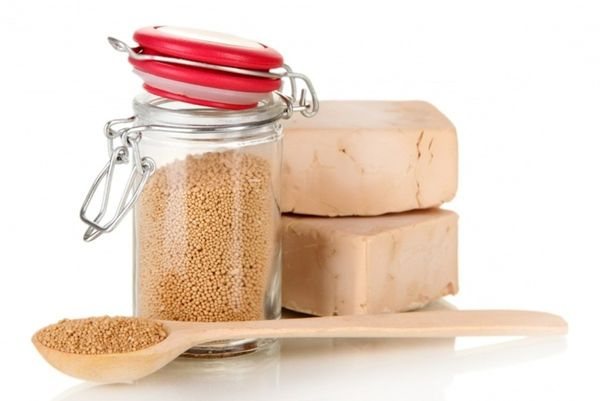

Methods for feeding plants with yeast
Feeding plants with yeast is divided into 2 types: root and root. Let's consider in more detail how each type of fertilization is carried out and their frequency.
Root dressing
The introduction of yeast root dressings is carried out in the following sequence:
- When the first leaf appears on the plant.
- After the second dive of seedlings.
- After transplanting the plants to a permanent place in outdoor conditions.
- During the appearance of inflorescences and their subsequent flowering;
It is important to remember that for seedlings planted in a new place, no more than ½ l of the prepared substance is required per bush. An adult mature plant should increase the dose to 2 liters.
Foliar dressing
Foliar dressing is carried out at a time when the root can not be carried out. This applies to weak, only planted in the ground (in an open or in a greenhouse) seedlings. Thanks to such feeding, the plant grows foliage more quickly, becomes strong and hardy. In addition, the spray applied is more quickly absorbed.
Top dressing of the foliar type is recommended at the beginning of the growing season.
It is important to remember that the yeast solution should be less concentrated than in the case of root dressing.
For open ground conditions, fertilizing is carried out in the evening or in non-sunny weather.
Principles of preparation and use of top dressing
To prepare a working solution, yeast is diluted in warm water with the addition of sugar. If necessary, the composition is enriched with additional components of natural origin. The mixture is infused for the interval specified in the recipe from a couple of hours to 1-2 or more days.
The nuances of using prepared yeast plant food:
- application is effective if there is a sufficient amount of organic matter in the soil, including manure, humus, rotted sawdust, cut grass, crushed roots of vegetation, tree bark, straw and other residues;
- the fungal composition is characterized by the absorption of potassium and calcium. To mitigate the risk of deficiency of important elements in the substrate, eggshells in powder form or wood ash are simultaneously introduced;
- yeast is capable of working exclusively in a warm environment; to apply the solution, you need to wait until the soil warms up to 20 ° C.
The substance with live microorganisms is used as an effective growth stimulant for green pets and for rooting cuttings of fruit and berry and ornamental crops. It should be borne in mind that nitrogen is useful during the period of active growth of green mass. Experts recommend feeding the soil with yeast compounds at the beginning of the growing season, in the spring, when the greens are intensively developing. In the phase of budding and flowering, microbiological applications are applied in doses.
Yeast dressing for vegetables
Fertilization of vegetable crops with vegetables with yeast is very common. This is especially true for vegetables such as cucumbers, beets, carrots, cabbage, tomatoes and peppers. For beets and carrots, three times a day yeast feeding is required per season. For cabbage, two-time fertilization per season is enough. More details on fertilizing tomatoes, cucumbers and peppers later.
Top dressing tomato
The very first top dressing of a tomato is performed a week after planting in greenhouse or outdoor conditions. The volume of solution for each bush should be ½ l.
The second feeding is performed before flowering. Here the dose of the solution is increased to 1 ½ l.
For a yeast top dressing intended for tomatoes, you will need:
- fresh yeast (30 g);
- extraction from manure (½ l);
- wood ash (2 tbsp.);
- sugar (5 tbsp. l.);
- warm water (10 l).
Mix the prepared ingredients in a common container and dilute with water for fertilization at a ratio of 1:10. The diluted mass is very carefully watered near the trunk of the bush.
Top dressing of peppers
For peppers, yeast feeding also plays an important role. It promotes the development of foliage and root systems and the development of soil organisms, which significantly increase fertility.
To prepare a top dressing for this plant, you need
- Dissolve fresh yeast (1 kg) in warm water (5 l), and leave for 1 day to infuse.
- Before use, you need to add the composition to a container with water (50 l), stir and start watering.
It is important to remember that after yeast feeding for pepper, wood ash must also be added to the soil.
Feeding cucumbers
Yeast feeding for cucumbers is important during the period of ovary formation and when the period of fruit ripening begins. Thanks to this fertilization, the number of barren flowers formed can be minimized. In addition, plants become more resilient to environmental factors.
To make a yeast feed suitable for outdoor and greenhouse conditions, you will need:
- fresh yeast (200 g);
- water (10 l).
Pour yeast with warm water, stir well and leave to infuse for 2 days. The resulting mass must be watered each bush. The volume of the poured composition for each plant should be ½ l.
When and how to properly feed tomatoes
Tomatoes of any kind are watered with yeast, growing both in the beds in the open field and in greenhouses. An important condition for the use of such a top dressing is a well-warmed soil, since the yeast "works" only in warmth, it makes no sense to bring them into the cold ground.
Seedlings
Top dressing of tomato seedlings is done after a pick, which will allow it to quickly take root and grow roots. The solution is prepared only from yeast and water. It is poured into a small watering can and the plants are watered at the root.
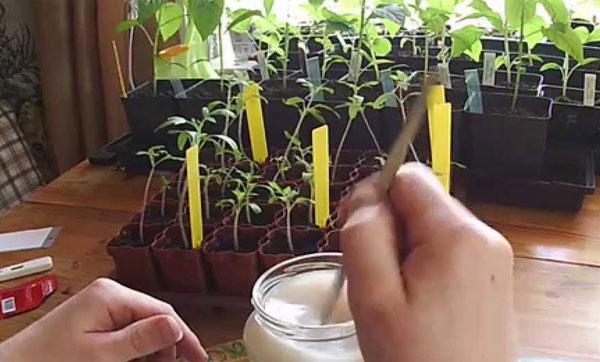

Foliar feeding can also be carried out. To do this, you need to filter the solution, pour it into a spray bottle and spray the tomatoes, gradually processing the stem, the inner and outer parts of the leaf blades.
Spraying is more effective for young seedlings, as the liquid is absorbed by the leaves and penetrates directly to the cells. There is no need to be afraid of burns, pure, non-fermented yeast simply does not have such a property.
Recommended to read
How and when to carry out foliar feeding of tomatoes
When and how to properly feed the tomatoes with ash
How can you feed tomatoes after planting in the ground
Rules for feeding tomatoes with iodine
Mature plants
Tomatoes, placed in a permanent place in the beds in the open field, are fed 1.5-2 weeks after they were planted there. After another 2-3 weeks, re-watering is carried out, before flowering - another one. The solution is taken at the rate of 1-2 liters for each bush, there is no need to increase the dose anymore.
Feeding tomatoes with yeast in a greenhouse is carried out in the same way as those placed in open ground.
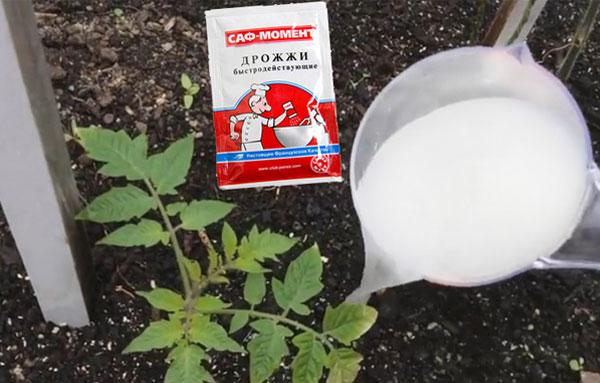

Feeding indoor and garden flowers with yeast
Fertilizer prepared with yeast is also suitable for indoor and garden flowers. For these representatives, the effect is also obvious, and the costs are minimal.
To prepare food for home plants you will need:
- sugar (1 tsp);
- dry yeast (1 g);
- warm water (1 l).
Mix the ingredients in a common container and leave for 2-3 hours to infuse. After a specified time, dilute the resulting composition with water in a ratio of 1: 5 and water the flowers.
Most favorably react to such feeding:
- violets;
- geranium;
- orchid.
Among garden flowers, roses and petunias are the most popular.
They will require the preparation of the following solution:
- Dissolve fresh yeast (1 kg) in warm water (5 l);
- stir and immediately dilute the resulting solution in water (10 l).
Top dressing of garden flowers is performed 2 times a season. For one bush, no more than ½ l of the prepared composition is required.
Conditions for the development of fungi
Three factors are required to induce fermentation:
- Heat. Yeast becomes active when the temperature rises above 15 degrees. For plant feeding from yeast to be effective, it is necessary to preheat the soil in containers that need to be exposed to the sun.
- Sugar. It promotes fermentation.
- Time. If the fertilizer does not have enough time for fermentation, the nutrients will not have time to transfer into the water.
It must be borne in mind that expired yeast (live or dry) cannot be used. When freezing, overdrying, prolonged presence in the vicinity of other aggressive bacteria, active fungi in yeast simply die.
You cannot make fertilizer from products that have expired. The effect of using it will be zero. When using bread slices, use clean, mildew-free, soft or dried slices.
Fertilizing berry crops and trees
The consequences of yeast feeding on strawberries (Victoria) are record harvests.
For her, it is necessary to carry out this process at least 3 times per season:
- during the formation of buds;
- at the very beginning of fruit ripening;
- in the fall after the completion of the fruiting process.
Preparation of the solution requires dry yeast (100 g), warm water (5 l). Leave for a day for fermentation, and before watering, dilute the resulting composition at the rate of: ½ liter of yeast composition per 10 liters of water.
Raspberries and currants are also often fermented with yeast. Thanks to this product, the bushes develop more fully, and the fruiting is amazing.
To prepare top dressing you need:
- dry yeast (1 sachet);
- warm water (1 bucket);
- sugar (½ cup).
Mix all ingredients and leave for 3 hours. Before watering, the resulting solution must be diluted with water based on a ratio of 1: 5. Watering each bush is necessary in the area of the root system.
For grapes, dressing prepared for watering cucumber seedlings is perfect. Therefore, you can immediately replenish both crops with useful components.
Tips & Tricks
Experts say that yeast solutions are important microbiological preparations for improving the nutritional properties of the soil.
Fungi promote the decomposition of organic matter in the substrate, which enhances the release of carbon dioxide, nitrogen and phosphorus.
Yeast works exclusively in a warm environment, so the solution is introduced into the heated soil. The shelf life of raw materials, both in powder form and in the form of a pressed briquette, is also important. The drug should be used together with ash or rubbed eggshells to balance the composition of the soil, since the fermentation process consumes significant reserves of potassium and calcium.
How to make natural yeast?
In addition to the usual yeast for baking, you can make fertilizers based on bread, grain or hop cones.
The resulting substance contributes to the effective growth and development of plants, due to the vigorous activity of the prepared composition of unicellular organisms.
Wheat grain sourdough
To prepare it you need:
- wheat grain - 1 glass;
- water - 4 tbsp. l .;
- wheat flour - 50 g;
- sugar - 50 g.
How to prepare fertilizer:
- The prepared wheat needs to be germinated.
- Add water, flour and sugar to the sprouted grain.
- Place the container with the described contents on the stove and cook the composition on a fire of minimum intensity for 15 minutes, while stirring it constantly.
- Remove the container from the stove and leave the composition to ferment for 2 days.
- Before use, add 10 liters of water to the resulting starter culture and mix.
Hop cone sourdough
To prepare, you will need the following list of ingredients:
- hop cones - 1 glass;
- water - 1 l;
- wheat flour - 50 g;
- sugar - 50 g;
- potatoes, pre-cooked and grated - 100 g.
Sourdough preparation process:
- Mix hop cones with water and put on a fire of minimum intensity.
- Cook for 1 hour, then remove from the stove and leave to cool completely.
- Add sugar and flour to the broth, place in a warm place.
- At the time of the beginning of fermentation of the composition, it is necessary to add chopped potatoes.
- Leave the mixture for a day.
- Before use, add 10 liters of water to the resulting ferment and stir.
Feeding cuttings with yeast
When propagating indoor plants by cuttings, yeast extract prepared according to any of the above recipes is used. The cuttings are placed in a solution for 24 hours. Then they are washed with running water, each cutting is planted in a separate container. After this treatment, the plants take root faster and take root better.
You may be interested in: Succinic acid as a fertilizer for indoor flowers
In the event that there is absolutely no yeast at hand, it is recommended to make a nutritious infusion from bread crusts.To do this, pour fresh crusts of bread with warm water so that they are completely covered. Place in a warm place to sour. The leaven is diluted three times with water. This infusion can be used to feed home flowers.
Testimonials
We offer a selection of reviews on the use of yeast as plant nutrition:
Rate the article:
Live feeding
Yeast is a single-celled fungus that, when it gets into a liquid medium, begins to multiply, and if you learn to use it correctly in the garden, it will give the plants a lot of useful properties. Depending on the type and conditions for the reproduction of bacteria, their composition may vary. They mainly contain proteins, minerals, vitamins, carbohydrates, fats, as well as the three most essential elements that are needed for plant development: nitrogen, potassium and phosphorus.
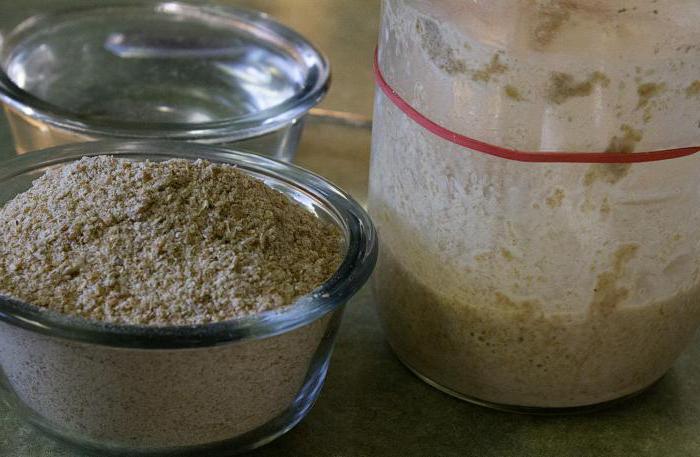

Sourdough with hops
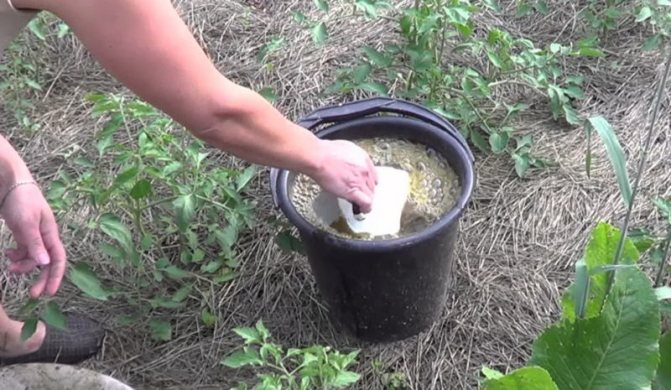

Pour water into a saucepan, bring to a boil, add a glass of hop cones, cook over low heat for about an hour. Then cool, strain through a sieve or cheesecloth. Pour in 2 tbsp. tablespoons of granulated sugar, 4 tbsp. tablespoons of flour. Wait 2 days for the composition to ferment. Then grate 2 potatoes into the sourdough and leave for another day. The sourdough will be completely ready and ready to use.
Fertilizing cucumbers
For this culture, exposure to unicellular fungi is especially beneficial. Cucumbers are one of the most demanding plants. Yeast feeding can be done after each fruiting wave. But care must be taken that such fertilizers do not lead to an increase in green mass to the detriment of fruiting. To avoid such a problem, you need to timely apply mineral fertilizers and observe intervals of at least 10 days between them. If the soil is good and the cucumber leaves have a healthy green color, then 1-2 waterings per season will be enough. You can feed the plant with dry yeast, since they are more accessible and more often at hand. They are bred like this:
- 1 package of product (10 g) is taken for 5 liters of warm water;
- pour 0.5 cups of sugar and leave until mash is formed;
- 1 glass of concentrate is diluted in 10 liters of warm water and watered by a liter per 1 bush.
It is important to ensure that the liquid does not spread far from the roots, since the dosage has been calculated and used in practice by many gardeners. It is better to plant cucumbers in grooves, then the nutrients will get to the roots of the plant. It is better to carry out such a procedure in the evening, when the earth warms up well.
Feeding plants with dry yeast can also be carried out in a greenhouse. This is best done after the second week of planting cucumbers in a permanent place.
The stimulating solution is used not only for cucumbers. If there is excess fertilizer left, then you can safely water other crops with it. In principle, it does not matter what type of product was used in the preparation of the solution. In the same way, brewer's, alcoholic and compressed yeast are infused.
Plant growth stimulation
The main role of yeast in growing crops is not feeding, but stimulating. Therefore, it would be most logical to use them in growing seedlings. Including - in greenhouse conditions.
But there are a number of rules, breaking which means only slowing down the development of plants:
- Do not use yeast for growing potatoes - tubers lose their ability to be stored for a long time, already in the middle of winter, their massive rotting is possible. The same goes for onions and garlic.
- You need to do yeast feeding no more than two times - at the beginning of the growing season and after 14-15 days (usually before flowering).
- Apply infusions in accordance with the season, only for soil sufficiently warmed up by spring warmth, because yeast will die in cold soil.
- Do not introduce yeast into the soil in the absence of organic fertilizing in it, such an introduction will not do anything, the mushrooms will have nothing to eat.
If these rules are followed, positive changes will be visible already at the end of the second week.
Feeding rules
Florists who want to feed their indoor flowers with yeast complementary foods should remember a few rules.
First, everything is good in moderation. An excess of minerals in the soil is just as bad as a lack of them. Moreover, the deficiency is always easier to correct by replenishing the supply of essential nutrients. When applying, you should strictly follow the instructions and observe the proportions. It is advisable to find out them for each plant or capacity of the earth separately.
Secondly, you must always focus on the season and the needs of green spaces. Nitrogen stimulates the growth of greenery, and this indicates its need during the growing season, that is, in the spring. At the end of this period, fertilization should not be performed.
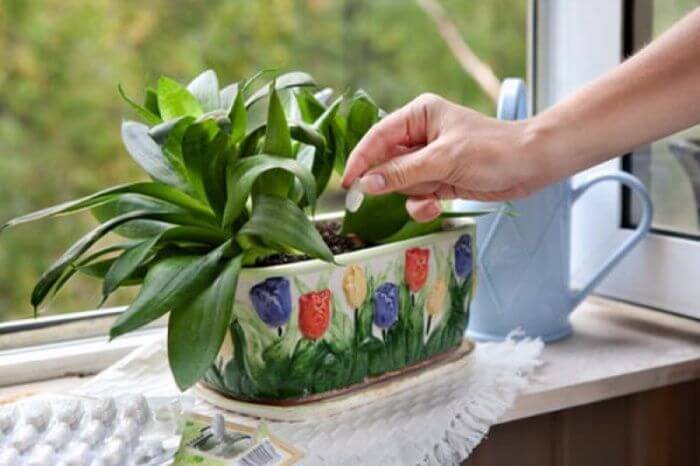

Rules for feeding indoor flowers
Application methods
Research on the use of yeast as an organic food has shown that the method can be beneficial and harmful. The beneficial effect is achieved with the correct dosage. Overuse can be harmful. In this case, the soil turns to stone, disrupting the process of air exchange.
Consider useful not only root, but also foliar feeding. It is used to fertilize young and weak plants. The solution is diluted according to the standard scheme. Sprayed once a season to strengthen the seedlings.
Composition and properties
Yeast is a living fungal product rich in vitamins and minerals. They contain:
- proteins, 60%;
- proteins;
- amino acids, 10%;
- phytohormones, auxins;
- minerals: iron, phosphorus, magnesium, potassium;
- hormones cycokinins, stimulate cell growth and division;
- B vitamins.
Produce liquid, dry and compressed yeast.
Benefits of yeast feeding:
- soil enrichment with microelements and amino acids;
- decomposition of organic residues with the release of phosphorus and nitrogen;
- increasing the endurance of indoor flowers with insufficient illumination of the room;
- rapid development of roots, stems, leaves;
- decrease in susceptibility to diseases, fungal infections, pests;
- low cost, availability.
Thanks to a strong root system, the plant grows faster, blooms longer and more luxuriantly, and becomes immune to disease.
Common mistakes
For the gardener, the main goal of all work is getting a good harvest. But for this you have to invest a lot of effort, use different fertilizers, protective agents, immunomodulators. Making mistakes can be hard. Therefore, it is better to learn from someone else's negative experience than from your own:
- During fruiting, yeast mash is not used. This spoils the taste of the product, and also prevents the culture from actively growing.
- If the seedlings are grown in a greenhouse, then yeast is not the best option for rooting. The smell of top dressing does not disappear. The solution continues to ferment as the temperature rises, which burns the root.
- Often, beginners forget that yeast-based fertilization should not exceed two times per growing season.
But the most common application mistake is the lack of verification of the causes of plant malaise.
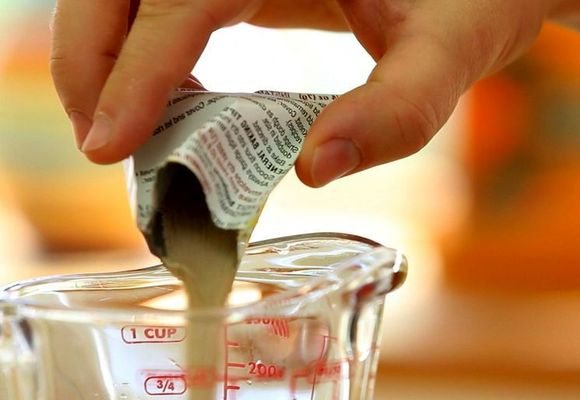

What plants can be fed with yeast
As mentioned earlier, yeast is suitable as a fertilizer not only for indoor plants, but also for the garden.
Yeast as fertilizer for indoor flowers
Before fertilizing indoor plants, let's figure out what is useful for feeding with yeast for flowers:
- It is able to stimulate the active growth of flowers, as well as provoke the development of the "right" bacteria that are present in the soil.
- Fertilization of flowers with yeast has a beneficial effect on the development of their roots, which in a short time can increase several times. It is no secret that the active development of the root system helps the same rapid development of the green part of the flower.
- Houseplants become stronger, more resilient and hardy.
- Top dressing allows you to accelerate the development of seedlings and facilitate their transplantation to a permanent place of growth.
- The solution can be used for foliar dressings, which are no less effective than root dressings.
Before fertilizing home flowers with yeast, it is very important to properly prepare the working solution so that the fertilization will benefit the plant.
Many indoor plants can be watered with the fertilizer in question. In particular, it is worth feeding geraniums, pelargonium. Fed flowers will surely reward the grower with a beautiful appearance, as well as rapid development.
Tomatoes
Yeast feeding for tomatoes is no less effective. With such a solution, you can significantly improve the general condition of the vegetable crop, as well as increase its yield.
Fertilizer should be applied in a complex manner. This means that you need to water the tomatoes not only when they are already growing in a permanent place, but also the seedlings themselves. Already after a few days it will be possible to notice that the green part of this plant culture has grown significantly, has become more fleshy and juicy.
You can fertilize tomatoes with yeast no more than two times. This product is characterized by fermentation, during which it absorbs a large amount of potassium.
Some gardeners recommend using a slightly modified fertilizer recipe for tomatoes, thanks to which it will be possible to compensate for the waste of potassium by the soil. This will require the following components:
- dry yeast - 20 grams;
- extract of poultry droppings (chicken) - 1 liter;
- wood ash - 1 liter;
- sugar - 10 tablespoons
- water (always warm) - 20 liters.
Cucumbers
Of course, feeding with yeast is suitable not only for tomatoes, but also for cucumbers, because they also need many nutrients.
Feeding cucumbers with yeast is carried out in three stages:
- as soon as the first leaf on the seedlings is formed;
- after planting the plant in open ground (only after fertilizing the soil with phosphorus and nitrogen);
- in the process of fruiting.
For this garden crop, yeast is an ideal fertilizer, which will surely increase the yield of a garden plant at times. The amount of fertilizer can be increased to five waterings, but it is imperative to adhere to a time interval of 14 days between fertilizing. The recipe for making fertilizer for such a popular vegetable crop is the same as for tomatoes.
Strawberry
Feeding strawberries with yeast is recommended for implementation several times a season. At the same time, there is no need to apply a large amount of fertilizer. You should focus on the consumption of 5 liters of top dressing for 10 strawberry bushes. You can use the following recipe for making yeast plant food:
- Mash 1 kg of raw yeast with your hands or with a fork and transfer to a bucket or other convenient container.
- Gradually add water (5 liters) to the yeast, kneading the mass thoroughly until a homogeneous consistency is achieved.
- Then add another 10 liters of ordinary water there and mix everything well.
This strawberry yeast feed should be poured directly under the bushes. For each plant, you need to allocate 0.5 liters of yeast solution.
In the absence of raw yeast, dry yeast can also be used. To do this, it is enough to dissolve the powder in a small amount of warm water and add sugar there. It is enough to take one packet of powdered yeast, and no more than two tablespoons of sugar. After that, you need to insist the mixture for 2-3 hours, dilute with water (1: 5) and you can start pouring the strawberries. Rational when applying this kind of dressing to the soil will be the use of a watering can.
Pepper
Fertilizing pepper is somewhat different from fertilizing tomatoes and cucumbers. The fact is that it is necessary to add a yeast solution under the pepper only after it has been transplanted into permanent soil. Although, there is an opinion that yeast fertilizer can be added to pepper seedlings.And since some gardeners successfully practice this method, each garden owner in the case of pepper must make a decision on his own.
Two or three top dressing of the soil from yeast per season will help to increase the yield of peppers. By the way, some summer residents have got used to revitalizing the pepper on their site with beer. In general, the effect of its action is approximately the same as that of a yeast solution. The only difference is in the cost of the products.
Carrots and beets
Fertilizers from yeast can also be applied under carrots, as well as under beets. The optimal amount of dressings is 3 times a season, while adhering to equal time intervals between procedures. For example, if the first time the yeast was introduced on the twentieth of June, then the second feeding should be carried out around the second half of July, and the third - closer to the last days of August.
You can use both raw and dry yeast for feeding carrots and beets. The recipes are very simple:
- Dilute 1 kilogram of live yeast first in 5 liters of water. Then combine the resulting homogeneous mixture with another 10 liters of water and can be used for watering beets and carrots.
- Take 10 grams of dry yeast and dissolve in a 10 liter bucket of water. Add 2 tablespoons of sugar there and leave for two hours. Next, the resulting composition is diluted in water (1: 5) and water the area.
It is recommended to water garden crops with such fertilizer using an ordinary garden watering can. For using yeast in the garden, it is best to choose the evening time when the heat subsides.
For seedlings and cuttings
The discussed yeast fertilizer contains in its composition about 65% protein, as well as a large amount of trace elements and amino acids. It is not surprising that it is widely used to improve the quality of seedling growth, and also so that the seedlings do not die during the rooting process.
In order to understand why you need to fertilize the soil for seedlings, it is worth figuring out the benefits of fertilization with a plant at this stage of development:
- Seedlings will take root much faster on the site after transplanting;
- Plants will receive a wide range of beneficial bacteria, since yeast is classified as a natural and absolutely harmless stimulator of development and growth;
- A garden or garden culture will become more hardy and stronger;
- Roots, etc., will begin to actively develop and grow.
You can also use a yeast solution to speed up the rooting process of cuttings. You just need to soak the last in a yeast solution for 24 hours.
Fertilization rules
In order for the flowers on the windowsills to grow faster and feel good, it is important not only to comply with the fertilizer recipe, but also to apply the prepared mixtures correctly.
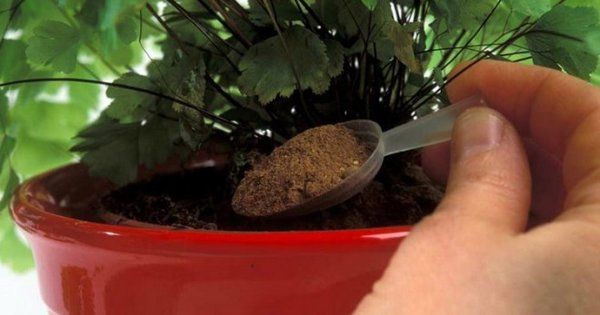

It is necessary:
- choose the right time for fertilizing;
- observe the measure;
- use additional means of soil enrichment.
Important! For the preparation of top dressing, only fresh yeast and bread without signs of mold are used. Yeast fungi are usually very tenacious, but when interacting with other, more aggressive bacteria, they die. Fertilizer made from stale raw materials contaminated with microorganisms will be completely useless.
Having the necessary information, it is not difficult to properly organize the process of feeding with a fermented solution. Find out how to do it in practice for maximum effect.
For which flowers is it suitable?
Yeast dressing is suitable for almost all indoor plants, flowering and decorative deciduous, in need and not in need of a rest period, light-loving and shade-tolerant.
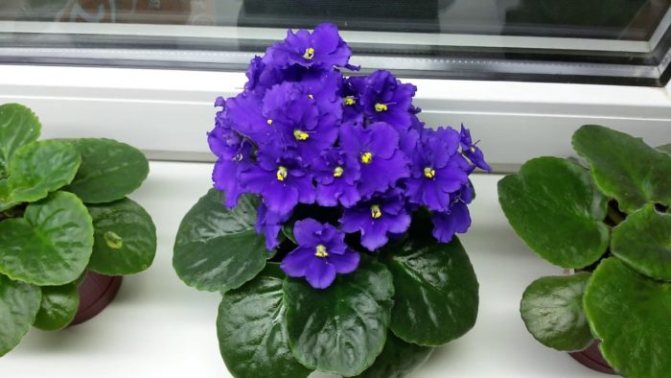

Some species respond particularly favorably to this kind of care:
- pelargonium;
- begonias;
- cordana roses;
- violets;
- stromant;
- syngonium;
- schlumberger;
- peperomia;
- fat woman;
- ficus.
How to water properly?
To get beautiful, strong plants, you should adhere to the following principles:
- use only freshly prepared solution for watering;
- apply fertilizer to wet soil, having previously loosened the top layer;
- water the plant from above, and not from the pallet;
- alternate yeast feeding with the introduction of a small amount of ash, which will saturate the soil with potassium and calcium - those substances that disappear due to fermentation;
- acidic soil or soil with a large amount of alkali is destructive for the yeast fungus, it is useless to use it for plants growing in such soil;
- fertilizer cannot be used simultaneously with fungicides, because they will destroy the fungus, preventing it from doing its "job."
How many times can you feed?
For the successful development of a plant, it is enough to feed it several times a season:
- In the spring when the flower wakes up. There are different terms for different types. Some enter the phase of active growth in late February - early March. Others expect a more significant increase in daylight hours, reviving only by mid-April.
- 5-7 days after transplanting into a new pot. So the flower will quickly get used to the changed conditions and will not get sick.
- During active flowering. This requires a lot of energy, which will help to replenish the yeast fertilizer.
- At the beginning of autumn. Many indoor flowers at this time are stocked up with strength before winter "hibernation". The fall portion should be less plentiful than the previous ones.
- As needed. The plant itself will signal that it lacks nutrients. Its growth will slow down, new inflorescences will be smaller than those that appeared earlier, the leaves will begin to wither and fall off.
- It should be remembered that an excess of nutrients is harmful. Having received too much nitrogen, the flower can begin to rapidly build up its green mass, but it will no longer be able to bloom.
Compressed yeast fertilizers
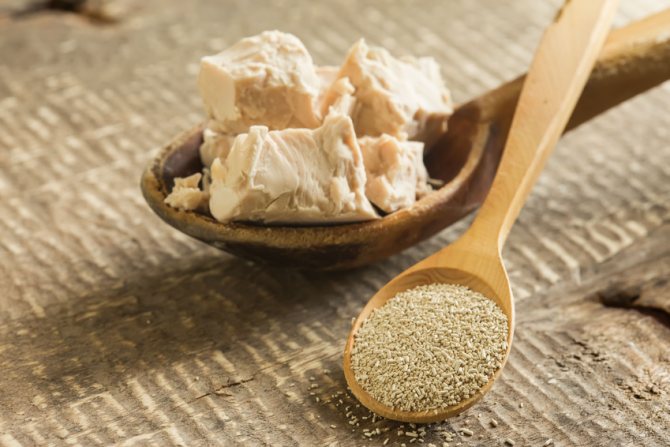

In the recipe, you do not need to be smart with additional components, it is enough to mix the bakery product with clean, settled water. If there are not many representatives of home flora, for one feeding you need:
- 900 ml. water;
- half a pack of yeast (50 gr.).
Stir warm water with bakery product. Stir until the solution is smooth. It is also not recommended to add it in its pure form, dilute it with five liters of water.
Preparation of solutions from raw and dry concentrate
Pour 1 liter of warm water into a container, dissolve 10 g of "raw" yeast in it. Then put a spoonful of granulated sugar into the thoroughly mixed mixture and leave to ferment. You should not add a lot of sugar, because what does not absorb the fungus will get to other bacteria, in particular, mold, and its reproduction in a flower pot is highly undesirable. The resulting extract is watered with home plants, after diluting it 5 times with water.
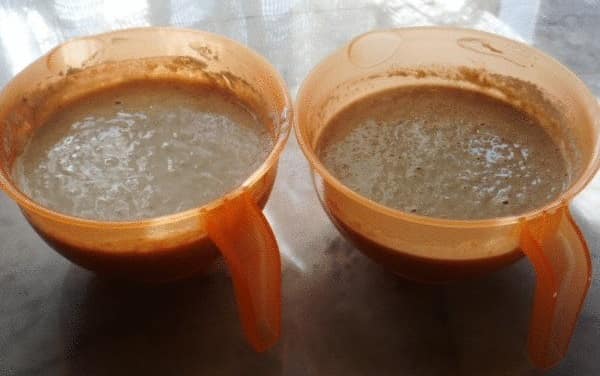

Homemade Greens Nutritional Blend
A powder product is also suitable for preparing a nutritional formula. In this case, you need to pour 1 liter of warm water into the container, add 8 g of dry product with 1 spoonful of sugar to it. Such a "hoppy" drink, prepared for home flowers, is placed in the heat for fermentation. The fermented saturated mixture should be diluted with water 5 times and used for watering.
Recipes
Yeast is not the only ingredient in the fertilizer mixture; a little sugar is also added to it, which is divided into glucose and fructose during fermentation. The second substance is not useful for green spaces, but the first accelerates the ability of flowers to absorb nutrients and improves their growth. But in order for glucose to help cells renew themselves, it also needs carbon dioxide. If it is not there, then it is not perceived by the plant and settles in the soil, which provokes the creation of a favorable environment for the appearance of mold and pathogenic microorganisms.
Alternatively, experienced flower growers often use glucose in tablet form, which is sold in pharmacies. For 1 liter of water, 1 tablet is consumed.There are many recipes for making yeast feeding for indoor plants, the most popular and effective ones are presented below.
Gardeners reviews
Lydia V .: “I have been growing varietal pelargoniums for a long time. There were problems with the rooting of shoots of some varieties, the most capricious refused to grow. For such, I prepare a yeast solution. Everyone responds very well, grows and blooms with huge hats. "
Karina Amosova: “The windows in my room face the north side, and few of the plants take root there. And if they do not die, they do not look very good. Yeast helps with this. I add them in spring and summer, and the flowers immediately come to life. "
Anya S.: “Thanks to yeast fertilization, I saved my ficus. For some unknown reason, he suddenly began to shed the leaves and fade. "Mash" with sugar and yeast shook him up great. The bush has risen and pleases. "
Yeast solution is an inexpensive, affordable remedy that will revive weakened, diseased plants. He will make the flowers grow, bloom and delight the owners with their appearance.
5 / 5 ( 1 vote)
Using wild yeast
On berries, fruits, on grain, if they are not washed, there are live, so-called "wild" yeast cultures. For this you need to take:
- Wheat grain of any kind of wheat - 200 g.
- Flour - 40 g.
- Sugar - 40 g.
Soak the wheat grain (without washing!) Until sprouts appear. Mix with flour and sugar, place in a blender and beat until a creamy mass is formed. Heat in a water bath, without bringing the water to a boil, for about 20 minutes. Put in a warm dark place for a day. The fermented mixture is diluted with water 1: 10 and root feeding of plants is made with it.
Yeast solution for mass watering in the garden
A large amount of solution may be needed when there are many crops on the site with which the yeast feeding is compatible.
- Pressed yeast - 100 g.
- Granulated sugar - 0.5 faceted glass.
All this is poured into a 3-liter jar, filled with warm, 20-25⁰C water, covered with gauze on top and placed in a darkened place for a week for fermentation. Then a glass of this infusion is poured into a bucket of water, thus a working solution is obtained for watering tomatoes, cucumbers, eggplants, carrots, cabbage and many other crops.
An exception should be made only for potatoes, onions and garlic, yeast dressings are contraindicated for them.
For each bush, with this technique, about 1 liter of liquid is consumed, except for strawberries and strawberries - for them 0.5 liters will be the norm.
A solution for feeding of the same concentration can also be prepared from dry yeast:
- Dry yeast - 10 g.
- Sour milk - 1 liter.
- Fermented jam - 0.5 kg.
- Dried bread - 1 kg.
All this is put into a bucket, mixed, pressed down with a press and filled with warm water. The mixture should stand in a warm, dark place for a week, 2 times during this time it should be stirred.
The working solution is made in the same way as in the case of compressed yeast: 1 cup of fermented mixture in a bucket of water. Watering basal.
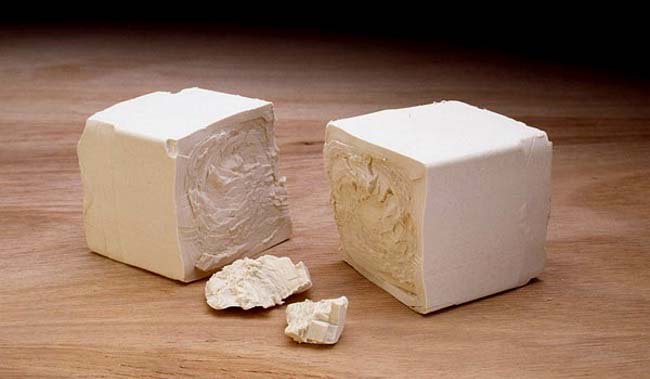

Cucumber dressing
Yeast dressings are especially useful for cucumbers. Only the watering solution is prepared according to a separate recipe:
- Dry yeast - 100 g.
- Water - 10 liters.
Insist for a day and a half, water under the roots of the lashes, 1.5 liters per plant specimen.
The feeding scheme should be in two stages. At the first stage, feeding is done in early spring, 5-6 days after planting the seedlings. When it is already guaranteed to take root and after nitrogen fertilizers have been applied to the soil. The fact is that the saccharomyces fungi introduced into the soil are able to absorb nitrates, thereby eliminating future fruits from their presence.
The second introduction of yeast into the soil is done after the plants have bloomed and phosphate fertilizers have been added to the soil.
Eggplant yeast feed
Eggplants, although they belong to nightshades, like potatoes, but, unlike him, they can and should be watered with yeast. Any solution prepared from both pressed and dry yeast is suitable. The main thing is to add wood ash or finely ground eggshells to the soil after watering them to restore the potassium-calcium balance.
For carrots and beets
Any of their recipes are suitable for watering. The only limitation is that for the whole season the number of waterings with yeast should not be more than three.
Watering cabbage with yeast
This dressing not only stimulates growth, but also improves the flavor of the cabbage by the time of harvest in the fall. It is better to use pressed yeast from recipe # 1 above. Water the cabbage with water with yeast twice a season. The last watering should be done about 15-20 days before the heads of cabbage are harvested from the garden. The main thing is that on the second day after watering with yeast, it is imperative to add wood ash to the ground: this is necessary to restore the amount of potassium and calcium necessary for the growing season.
If you grow cauliflower or some other cabbage, not white cabbage, then the yeast concentration can be increased by 1.5-2.0 times.
Yeast for peppers and tomatoes
Any yeast recipe is suitable for watering / feeding these crops. True, there are nuances: many gardeners enhance their compositions with special additives. For tomatoes and peppers, tobacco dust is added - but it should only be natural. If yeast watering is done during the formation of ovaries, then herbal tincture must be added to the solution. And during the ripening of the fruits, ash from deciduous firewood must be added to the soil.
Seedlings are watered at the rate of 0.5 liters per bush, and adult plants already require 2 liters. The first watering is done about a week after planting the seedlings, when it is already guaranteed to take root and the leaves, which are sluggish at first, have risen and got stronger. The second - during the budding period, when tomatoes and peppers are about to bloom.
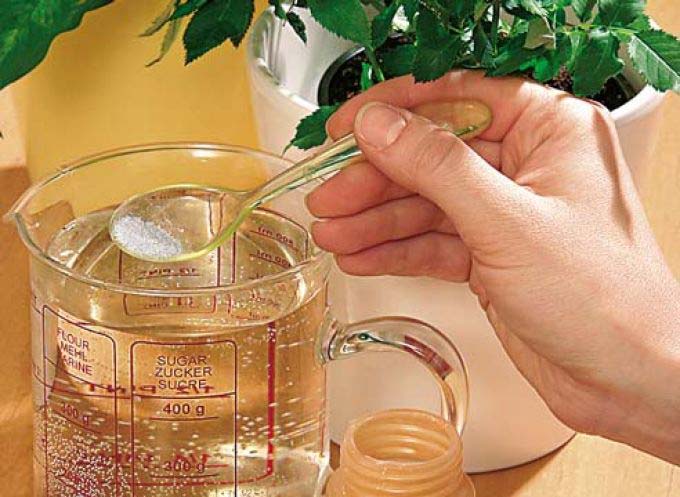

Feeding strawberries and strawberries
Yeast is applied no more than three times during the whole season. With a general recommendation for such cases, which applies to all horticultural crops: mandatory potash fertilization after watering with yeast - because of their increased appetite for this mineral element.
- The first top dressing is in early spring, as soon as the soil warms up to fully awaken the greenery of the bushes.
- The second - after the beginning of the growth of the ovaries (stage of green or white berries)
- The third - during the preparation for winter, after the harvest. The bulk of the ash is added at this stage.
Foliar spraying
Some manuals do not recommend such feeding due to the fact that the technical purity of yeast (especially pressed, and made not according to GOST, but according to TU) may raise doubts. They may contain a large amount of impurities in the form of yeasts of the genera Candida and Torulopsis.
Impurities not only reduce the efficiency of the pressed yeast, but can also act as pathogens on the leaves of strawberry and strawberry bushes, especially if we take into account their ability to mutate in vivo.
Feeding raspberries
It is used mainly by opponents of mineral fertilizers, supporters of "naturalness". Then yeast feeding can really serve as some alternative to minerals in the composition of complex compounds.
A yeast solution for raspberries is prepared in a ratio of 1: 5 according to any of the recipes given, watering is done immediately. It is not recommended to do more than two dressings. Terms of feeding
- The first is in early spring (late April-early May).
- The second - immediately after flowering, before the formation of ovaries of berries.
Watering basal, about 2.5 liters under the bush.
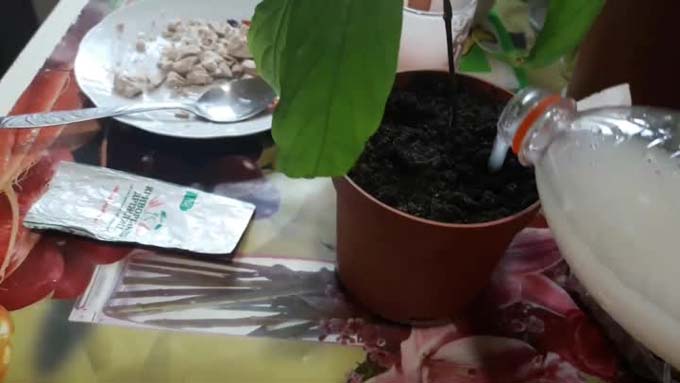

The benefits of feeding flowers with sugar
From chemistry lessons, we remember that sugar breaks down into fructose and glucose. The first is of no use to us, but the second, that is, glucose, performs 2 functions at once.First of all, it serves as a source of energy for all vital processes of plants (respiration, absorption of various nutrients, and so on); secondly, glucose is an excellent building material that promotes the formation of complex organic molecules.
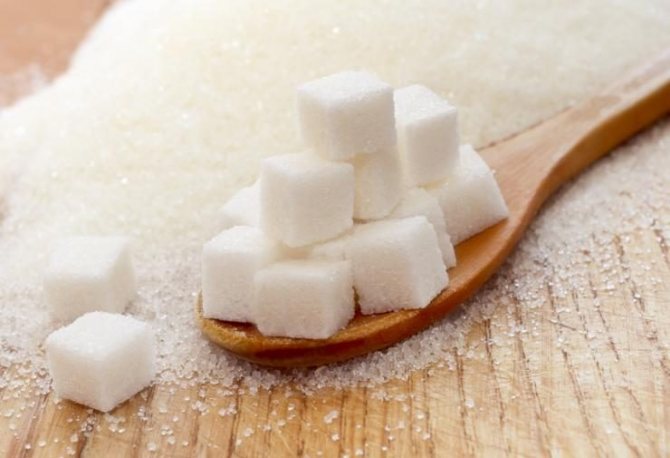

True, there is one caveat: glucose is an excellent builder only if it is well absorbed, which, in turn, requires carbon dioxide. With an insufficient concentration of carbon dioxide, once in the root zone of plants, sugar will turn from a builder into a source of nutrition for various molds, root rot, and so on.
What yeast to use
The product, which carries beneficial bacteria, is found in everyday life in dry and fresh form. There is also granular, baker's and brewer's yeast. For plant nutrition, yeast is used both dry and fresh. You can not use yeast with an expired shelf life. Some people mistakenly believe that if yeast is subjected to temperature changes during its manufacture and during culinary use (for example, refrigerated), then this does not play a special role for plants. The gardener should take into account that he is dealing with live microorganisms. Also, this product may lose its properties when interacting with other bacteria. Therefore, the opened packaging with dry yeast should be hermetically closed so that during further use they do not lose their quality. In order for the yeast to work, they need to be given time. Only after the fermentation process will they begin to give those nutrients that are needed by vegetable crops.
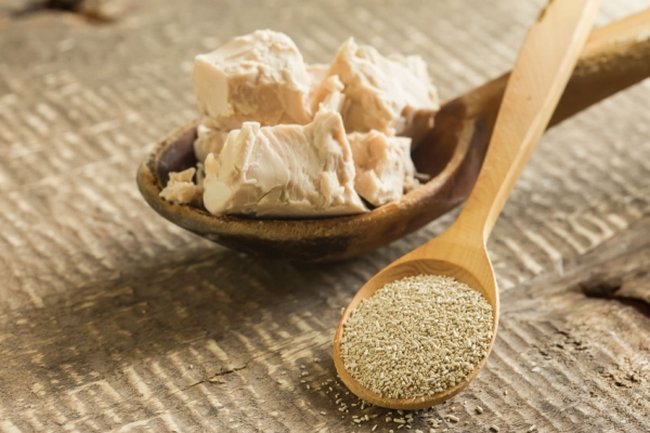

What types of yeast can be used
You can use raw pressed yeast or dry concentrate to prepare the yeast top dressing. Raw yeast provides the strongest fermentation, it contains about 70% moisture. Fresh compressed yeast can be stored in the refrigerator at a temperature not exceeding 10 degrees for about 12 days. Good quality compressed yeast should have a uniform gray or cream color and should break when pressed and not smudge. Fresh yeast quickly deteriorates without access to air, therefore, it cannot be stored in sealed packaging.
Dry yeast, which has a granular appearance, is obtained by dehydration. They contain only 8% moisture. They do not need a refrigerator for storage, the shelf life of dry yeast in original packaging without damage reaches 1-2 years. After opening the package, it is reduced to 1 month. In order for dry yeast to show its properties, it is recommended to pour it on the surface of the water and, without stirring, leave for 10-15 minutes, and then stir until smooth. 30 grams of dry yeast can replace 100 grams of raw pressed yeast.
It is important to note that expired yeast (live or dry) is not suitable for feeding. Fungi are unpretentious and viable, but in the vicinity of more aggressive bacteria, they can simply die.
Benefits of dietary supplement yeast
They are an effective fertilizer for home flowers, have a good effect on their growth and development. They increase the resistance of green spaces to diseases and pests, flowers become more vigorous in conditions of insufficient light or humidity. Even under not the most favorable conditions, cuttings and shoots root better and the root system becomes three or even ten times larger. This, in turn, leads to more active growth of the ground part. Even the previously sluggish stem becomes more massive and strong, the leaves are filled with sap and gain weight, this also leads to accelerated development of buds and their longer flowering.
The secret of this top dressing lies in the fact that the tremors are a fungus, which, getting into the soil, begins to change its composition. Microorganisms lurking in the ground awaken, and once in a favorable environment, they begin to actively process organic matter.In the course of such a decay, a large amount of nitrogen and potassium is released, which, in turn, are so necessary for home flowers.
The effect of yeast on plants
The benefits that yeast feeding can bring to plants is the following:
- Fertilizer promotes active root formation.
- Due to the high nitrogen content, there is an intensive growth of vegetable crops. This is especially noticeable on small seedlings. The bushes are actively gaining green mass and look healthy and luxurious.
- The stems become strong and resilient.
- Yeast serves as a source of additional nutrients that may not be present in the soil.
If you water young seedlings with fertilizer when they are indoors, then after planting in open ground, they take root better and stretch less.
As a result of the experiment, it was noticed that the release of nutrients by yeast bacteria not only accelerates the process of emergence of roots, but also multiplies their number.
You should know that the positive effect of yeast is more noticeable on soils where organic fertilizers were previously applied. Such a soil creates favorable conditions for the active activity of bacteria. When interacting with organics, they produce large amounts of nitrogen and phosphorus. Single-celled fungi contribute to the decomposition of elements, as a result of which the soil microflora improves. But regular feeding of plants with yeast creates a potassium deficiency in the soil. Therefore, you need to alternate them with potash and calcium fertilizers. Many gardeners use ash for this purpose. The recommended amount of dressings is no more than 2-3 times.
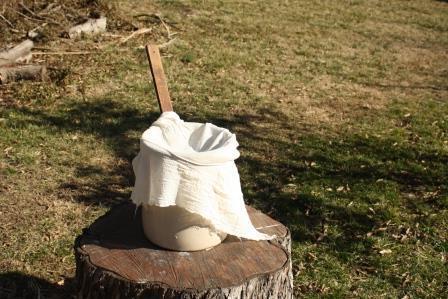

What can be fertilized with yeast
They are effective for almost all crops: both growing in the room (geranium) and garden flowers (petunia), bushes, trees, vegetables. It turns out to be useful feeding from yeast for peppers, tomatoes, cucumbers. Used as a fertilizer in the cultivation of strawberries and strawberries.
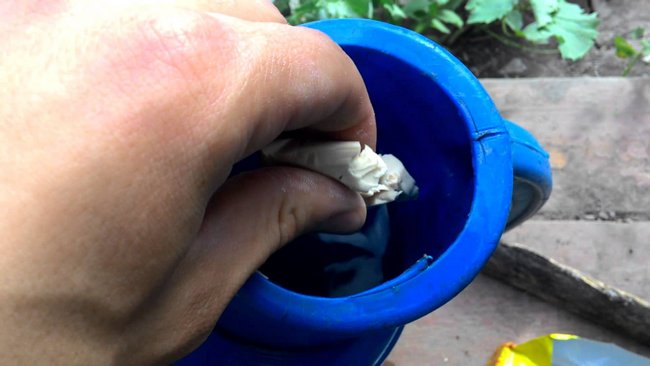

Herbal infusion with added yeast
Natural fertilizers have become quite common. Firstly, these are environmentally friendly infusions that are able to saturate plants with the necessary nutrients. In terms of their properties, they are in no way inferior to chicken droppings, manure and humus. Secondly, they are not expensive.
If yeast is added to the herbal infusion, this will significantly speed up both the process of preparing the fertilizer itself and its effect on plants. It is prepared like this:
- fill a large barrel (70 l) up to half with fresh grass;
- add about 2 loaves of dry bread and 0.5 kg of yeast;
- fill the barrel with water (leaving a little space for fermentation) and in two days the infusion will be ready for use.
Feeding with yeast reviews and conclusions from them.
Because this type of feeding has been used by summer residents for several years from practical experience, the following important conclusions can be drawn:
- When feeding with yeast in the soil, in addition to the production of the necessary nitrogen, there is a significant absorption of calcium and potassium, and if proper measures are not taken, after a couple of years the soil will become impoverished and stop giving birth. To compensate for the lack of potassium and calcium, ash must be added to the yeast solution.
- Feeding with yeast will work well only on organic-rich soil, because yeast solution itself is not a fertilizer, but only a catalyst for the active decomposition of organic substances into the elements necessary for the plant. It is better to bring organic matter to the garden in advance.
- The activity of the yeast fungus requires heat, so it makes sense to apply such a top dressing only in well-heated soil, otherwise there will be no sense from it at all.
- Feeding with yeast is most effective for strengthening the root system, therefore it is most correct to use it when transplanting seedlings or seedlings into open ground. Additionally, you can add it in two weeks. And that's enough for the whole season.
- Feeding with yeast is suitable for all vegetable, horticultural, berry crops and flowers. It stimulates the active development of any plants. But it is better not to use this dressing for onions and potatoes, because this impairs the taste of the product.
- The active component of top dressing is yeast, it can be taken not only in a pack of yeast. For these purposes, kvass, beer, any mash from old jam, etc. are suitable. And when you need to feed a small indoor flower, you can easily get by with a solution from an unfinished glass of kvass / beer.
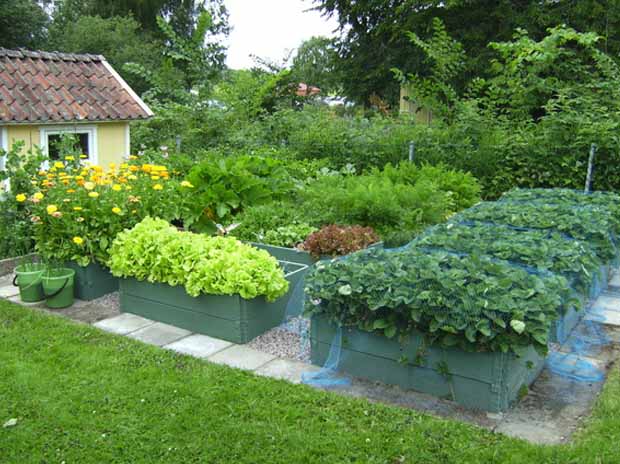

Fertilizers from yeast are easy to prepare yourself at home. To do this, use dry or pressed baker's yeast. Dissolve them in medium temperature water. Putting yeast in a hot liquid will kill all bacteria, and the benefits of feeding will be nil.
The proportions of water and yeast can be changed for each crop, you can always choose the option that is easier for you and showed more efficiency on your soil.
Do not add organic matter directly to the solution: bird droppings, manure or plant stems. All this must be present in the soil in advance - in small quantities and partially rotted.
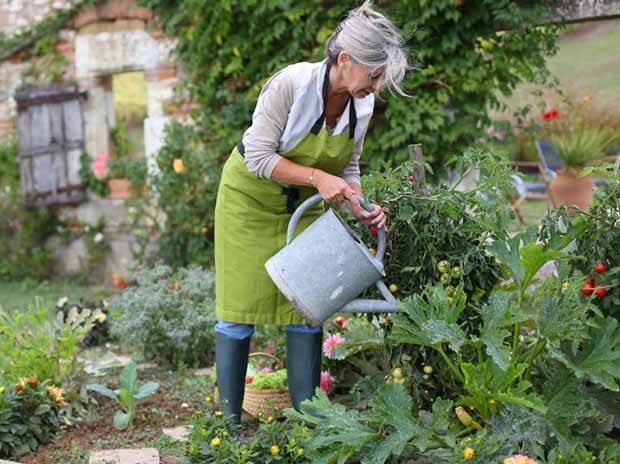

The easiest way
There are many recipes for feeding plants with yeast, but they all have the same principle. The constituent components of such fertilizers can include: bread, organic extracts, ash, sugar and water. In all cases, fermentation occurs due to beneficial microorganisms. Even an inexperienced gardener does not need to make special efforts to feed plants with yeast. How to prepare such a fertilizer is described below:
- Defend the water in advance and pour it into a 3-liter jar (the water must be warm). Fill the container so that there is room for fermentation and the liquid does not overflow.
- Dissolve 100 g of yeast in a small amount of warm water and pour into the total volume of the liquid.
- Pour in 5 tbsp. l. sugar and stir well.
- Be sure to put the jar with the contents in a warm place.
- As soon as the fermentation process is over, the solution must be applied immediately, otherwise it will lose its useful qualities.
- Add 1 glass of finished mash to a bucket of water and pour 1 liter under the plant.
The article describes a few more ways that explain how to dilute yeast to feed plants.
What you shouldn't fertilize plants
Not all recipes are created equal. Feeding indoor flowers with folk remedies is a contradictory thing, if everything is clear with mineral fertilizers based on their composition, then with home remedies it is sometimes difficult to guess. Some kind of fertilizer will not do harm, but also no benefit, and some may do harm.
- Eggshell. A fairly common fertilizer, which, according to flower growers, contains a lot of calcium. But the problem is that this calcium is in a form that is difficult to access for the plant, but the level of acidity of the substrate from such fertilization decreases very simply. In addition, calcium is not required for so many varieties of houseplants. For everyone else, excess calcium will only contribute to the onset of chlorosis. If there is any benefit from the eggshell, then it is its ability to act as good drainage, which also loosens the soil.
- Coffee grounds, tea leaves. Also nothing more than good drainage, which increases the looseness of the soil. Coffee grounds, like eggshells, increase the acidity of the soil, which does not have the most positive effect on indoor plants. This is well tolerated only by azaleas, hydrangeas, lilies, ripsalis, roses and some other evergreen varieties. Sciarids are easily bred in tea leaves.
- Broth or defrosted water after meat, water after washing cereals, potato or other vegetable broth.All this does not bring tangible benefits to the plant, but the broth of meat is completely harmful, as it increases the risk of the appearance and development of harmful microorganisms.
These are not all folk recipes that can act as fertilizers for indoor flowers. You can feed your plants with garlic and onions, aquarium water, hydrogen peroxide and potassium permanganate, toothpaste, or tooth powder. Whichever fertilizer you choose, remember that the main thing is not to harm. Not all dressings are created equal. Follow the recommended proportions, water the plant at the recommended rate, use whatever fertilizer you think is the most optimal, and always monitor the reaction of your green pets.
How does feeding with yeast affect indoor plants, is it possible to water house flowers with them
For indoor plants, as it turned out, this type of dressing is very useful:
- it stimulates their growth well, and is also a source of "good" bacteria needed in the soil;
- it stimulates the growth of the root system several times. And the faster and more powerfully the roots grow, the better the aerial part of the plants will develop;
- thanks to the introduction of such feeding, the plants become stronger and more enduring;
- if indoor plants reproduce through seedlings, then it should also be fed with a yeast solution. In this case, the seedlings will be more squat and easier to transfer the transplant.
As it turned out, such feeding is useful and necessary not only for indoor plants, but also for garden flowers and vegetable plants. But this is worth talking about in a separate article.
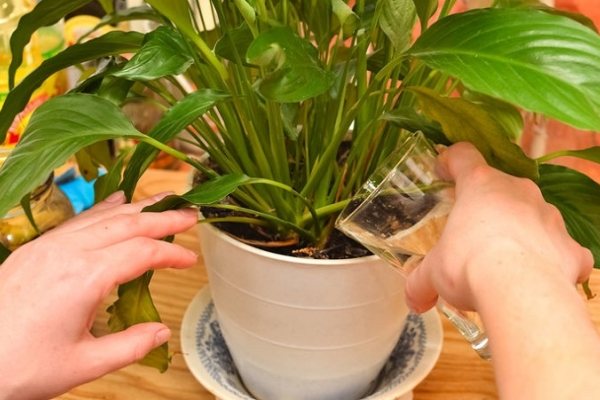

Top dressing is useful and necessary not only for indoor plants, but also for garden flowers and vegetable plants


